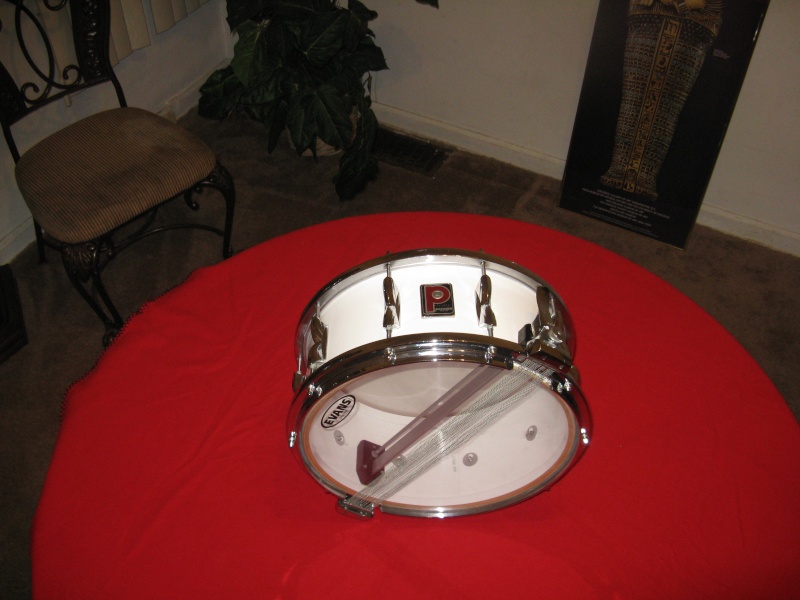Remo makes their own damper rings as well as Evans, moon gel works good, also or you can cut a ring out of a old skin, about a inch in width, and place it on the snare. Gaffers tap works well, it works better than duct tape because it absorbs more. You also have to tune all the lugs even by tapping a inch and a half away from each lug making sure that you have the same pitch, use a pencil with the eraser end for this, it works the best, and you can here the tones and pitch better. And use 2 tuning keys, at the same time, it works the best doing it that way. Or get the Bob Gatzen drum tuning, sound and design video,it is 95 minutes, and believe me, when you finish with this video, you will know mostly everything there is to know about drum tuning, tones, woods and all the little things you name it, Bob lays it out. on down to how the construction of different snares, toms and so on, affect the tone and pitch, this is a must have video. He also has a simplified version, which I do not have. But you can find them both here. This video will make you a expert.
http://www.google.com/search?client=firefox-a&rls=org.mozilla%3Aen-US%3Aofficial&channel=s&hl=en&source=hp&q=Bob+Gatzen+drum+tuning+and+sound&btnG=Google+SearchQuote
Forgot to add that I particularly like the rims. They are flattend going completely around the shell not like the normal rims where they're raised only at the point of the drum keys then pans out. That probably has substantial logic in terms of acoustical projection and probably more so in tuneing stability
Spanky saidI know you were, yes those rims are the best rims that I have ever had, and they are solid, they weigh the most on the drum. And if you look inside the drum, you will see that it has one bolt in the lugs, This helps the rims and the heads to conform to the drum better, making for better even tensioning all the way around. Because the lugs can move some for any variations. And the rim shots, which I do a lot of is absolutely fantastic. But Rac we need a little ring, because if you don't, the snare will not cut through the other instruments as good. Sitting over the snare you hear the ring, the most, on the other side 5 feet away the rest of the band playing nobody hears it. As long as it is not to ringy, I must admit though, that I am a fan of the muffled snare drum. I like warm darker sounding snares with a lot of pop or crack, but I like it bright enough for it to be articulate, hearing every ghost note. So it is a fine tuning thing. It takes years to learn how to tune drums the right way, it is a trial and error thing. Sometimes I will still ask people how they tune their drums, so that I can gain all the knowledge that I can, I asked Don that not to long ago, and he said he likes to tune his batter and resonant heads tight. I am the same way, but what I am learning now is that you have to tune the drum according to that drums personality, that even goes for which heads to use, on a particular drum. Sometimes your drums might sound ok to you because you are sitting over top of them, but out front they sound like crap. There are a lot of little things to learn, like if you have a deep snare, have wider snare wire, because the deeper the snare, it takes longer for the resonant head to react because of the distance thereby losing some of the pressure in the process, thereby making the not so wide snare wires less effective. Just little things like that can become big things. That floating bar going through my snare gives it a distinct sound also, what I like about this bar is that it still lets the shell resonate or ring, and that is important. I know one thing, I have really become tired of metal snare drums, I will always keep one, I have 2 left, but I am tired of them, the Sonor snare I have sounds good though, and the 3rd snare the TAMA, I traded to the church for the Premier.
And go here to read and see how different woods affect your drums
http://mikedrums.com/tuning/shell.html [/img][img]
[/img][img] [/img][img]
[/img][img] [/img][img]
[/img][img] [/img][img]
[/img][img] [/img]
[/img] [/img][img]
[/img][img] [/img][img]
[/img][img] [/img][img]
[/img][img] [/img][img]
[/img][img] [/img]
[/img]
 Home
Home